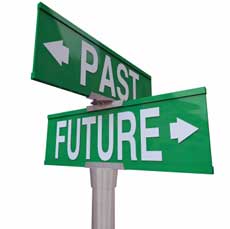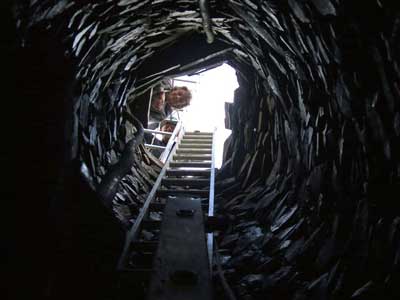“It may seem an unlikely thing to wake up one day feeling joyful and alive, despite so much pain, fear and fatigue. But with determination and dedication, I know it can happen. It happened to me.”
A Book Series
This begins a chapter-by-chapter exploration of a woman’s quest for healing called “The Last Best Cure. My Quest to Awaken the Healing Parts of My Brain and Get Back My Body, My Joy and My Life” by Donna Jackson Nakazawa

Donna Jackson Nakazawa was swimming 60 laps at the local pool until she woke up one day and was unable to move
I’m doing this because, like many people with ME/CFS, Donna had a severe fatiguing illness for which the traditional medical profession was finding few answers. Frustrated, depressed and with a bleak future ahead of her, Donna started out on a new path that was both inside/outside the traditional medical community to improve the quality of her life and hopefully her health. She gave herself a year. With so many treatments behind her , it was her “last, best cure”.
Her life had changed literally overnight about ten years ago. One day this 30 year journalist with a young daughter was swimming 60 laps in her neighborhood pool; the next day she was paralyzed and unable to move her arms or legs. The turns that life can bring, as we know, are nothing if not astonishing.
Donna Jackson Nakazawa woke up that morning to sudden-onset Guillain-Barre syndrome, a Multiple Sclerosis-like autoimmune disorder. She slowly regained her ability to walk and drive, only to get hit five years later with another paralyzing episode. Despite the best medical care, the second hit was deeper and harder, and her recovery was more tenuous.
She struggled back to a new kind of life: one that included numb feet and hands, muscle spasms, and a flu-like fatigue that never lifted. In Job-like fashion other diagnoses followed: thyroiditis, nerve damage, a clotting disorder, bowel problems, slipped discs, and mysterious fevers. A pacemaker kept her heart on track, and immunogloblulins kept her body (mostly) from attacking itself. But the vigorous athletic young mother was long gone, replaced by a woman who had to lie down on the landing to recover from going up the stairs, who never felt well, and whose life was mostly joyless.
The medical profession kept her alive, but they had few answers. The depression, whether clinical or not, seemed inevitable.
Who This Book is For
Donna’s answer to the question, “Who this book is for?”, is gripping. Walk into any waiting room, she writes, and it’s full of women in their thirties, forties, and fifties. Women have more migraines, more back problems, more irritable bowel syndrome, arthritis, autoimmune disorders, and higher rates of cancer (before age sixty).
The book is for the 133 million people in the U.S. living with a ‘chronic’ (which means ‘incurable’) illness, most of whom are women. It’s for a population that is getting sicker and sicker, with the rates of chronic illness increasing by about one percent a year. It’s for anyone living with a chronic illness that wants to somehow regain their joy.
Two Struggles: An Autoimmune Disorder and a Dark Future
With all the anxiety and worry and pain and fatigue, Donna was living a joyless existence. A medical journalist, her research was telling her that being joyful again could help. It was telling her that the anxiety, depression, and pain, whether ‘clinical’ or not, that comes hand-in-hand with having a chronic illness was having its effects. It was telling her that the increased stress hormones and inflammatory factors that accompanied living with a dark future, of having a joyless existence, were making things worse.
“When we are stressed, worried, or in pain, this complex network of biological messengers … increases the cascade of chemical messengers that break down our cells and corrupt our immune response”
In the midst of her pain and fatigue she was determined to find her joy again and see how it affected her health. She was pretty sure something good would happen. The research strongly suggested it would.
“When we move to a state of joy and contentment … we create … a seemingly invisible shield of positive ‘floating brain’ activity that protects our cells, our immune function and our health.”
She had a big task ahead of her.
Brain Reset

What would happen physiologically was anyone’s guess. Was it possible, she wondered, to turn back the clock on some of the physical damage Guillain-Barre had done on her system? Or might it help halt the progression of the illness? At the very least she hoped for feelings of contentment and peace in spite of her physical challenges.
I want people to know that there already exists an understanding as to how we can activate the healing potential of the brain. Understanding how to do this gives us powerful tools, ways to change the messages our brain is sending to our cells and our body. Everyone deserves to live the life they want, and these tools can help us all achieve a greater sense of well-being, and even joy. Interview with Melanie Brevis
The vast and constant turnover our bodies experience gave her hope. Our white blood cells are completely renewed every couple of days, our red blood cells every couple of months, our stomach lining every couple of weeks, and our skin every month. The potential for change appeared to be there.
We’ll see what she did and how she did as we go through the book.
- Check out The Last Best Cure Blog Series
____________________________
Donna Jackson Nakazawa is an science journalist, author and public speaker. She tweets often about breaking medical news. Follow her tweets and check out her Facebook site and website and blog.
She is the author of the Autoimmune Epidemic, Does Anybody Else Look Like Me? A Parent’s Guide to Raising Multiracial Children as well as a contributor to the Andrew Weil Integrative Medicine Library book, Integrative Gastroenterology, (Oxford University Press, April 2010).
Among others she is the recipient of the 2010 National Health Information Award, the 2012 international AESKU Award from the International Congress on Autoimmunity for her lifetime contribution to autoimmune disease research with the book The Autoimmune Epidemic.







This is helpful! Thank you all.
This is the first time I have encountered anyone describing the profound muscle weakness which kicked off my illness 18 years ago. I awoke unable to move anything at all. I am asked if I panicked
and I rather think that my brain function was also affected. All I was concentrating on was just how to get to the bathroom, when nothing would move! That effort took a very long time, and was so great that I promptly fell asleep for the day, and after another ardous trip to the little room, the night as well. Then after that it was slow…slow.
Question; Does this pattern always suggest Guillain-Barre Syndrome as the article seems to infer, or not?
I really don’t know if it means Guillain-Barre or if there are other disorders it could be as well. Actually, I do know – Lauren Stiles – another extremely fit woman – woke up one day and couldn’t walk either; autoimmune process probably deriving from Sjogren’s Syndrome – had attacked the autonomic and sensory nerves. Julie Rehmeyer had a similar experience – no one figured that one out – but ultimately mold avoidance was very, very helpful over a couple of years.
“Even people in prison have good days”. Sometimes I have to tell myself that. I just read the snippet of the book on Amazon. Looks like something I can really relate to.
Yes, when you have such difficult symptoms it’s really like a battle of sorts with your mind..
It’ll be interesting..
Hi Cort- I’m not sure I understand how “we go through the book” . Should I buy the book to follow along with your discussion? Is today’s post about chapter 1? When is the next part? This sounds like a must read, and discussing it here, chapter by chapter, sounds like a great project. Thanks!
I would love it if people bought the book and we could discuss it as I go chapter by chapter (or chapters by chapters).
You’ll certainly get the gist of the book at I do overviews of the chapter if you don’t buy the book but it would much richer for all of us if you bought the book. She’s an excellent writer and a lot of good stuff is inevitably going to be left out. 🙂
Very inspiring post, thank you!
Just today, a neighbor I kind of know from a class we took together asked me how I was. I told her the truth and she offered some kind sympathy. I noticed minutes later that my pain (fibro) was much assuaged. Wow.
But it seems to be up to me to offer myself kind sympathy because with an invisible illness…..hah!
Good advice from the blog to try to reverse (good luck without opioids) the pain.
For me personally, I’ve found there is a strong pain-stress interaction…It undoubtedly had something to do with the autonomic nervous system since I know it involves my breathing and contracting my muscles and I assume my immune system as well.
Yes, it is up to you. It is always up to you -even if you have sympathetic people around you – you still have to accept their sympathy!And you have to allow yourself to have sympathy for yourself. We forget to do that a lot!
Sadly I can relate to this as a family member (my dad) had guillian barre from a flu vaccine. It is a horrible illness. Many dont know that both a flu and pneumonia vaccine can give you this. He never completely recovered from it.
Issie
🙂
This sounds like such a relevant book. Thanks for bringing it to our attention Cort.
I’m looking forward to it – thanks 🙂
Sounds like an interesting read at the very least.
This caught my attention :
“Her goal was nothing less than to turn the default setting of her brain from one associated with anxiety, pain, and fear to one with joy and well-being. So she embarked on a year-long course, under a doctor’s watchful eye, of neural re-networking.”
It sounds very like a concept in neuroscience called the ‘default mode network’ – a network of brain regions that are active during periods when the brain isn’t engaged in specific task oriented activity.
This ‘state’ is associated with periods of ‘down time’ – introspection, creativity, wandering thoughts etc but the brain is far from inactive – in fact it may be at least as active in this state as it is when focused on a task.
There’s some evidence that in chronic pain conditions a lot of this ‘down time’ activity is dysregulated and introspection/rumination is (understandably) focused on the pain and that some practices such as meditation can help restore normal function/connectivity.
http://en.wikipedia.org/wiki/Default_mode_network
Theories aside and whether or not its possible to improve health by taking a ‘positive attitude’ – to paraphrase Kabat Zinn – we are where we are and it makes sense to me to try to find as much ‘joy’ in life as possible.
Easier said than done though. I’m open to some tips!
I imagine we’ll get into the default mode at some point. I agree – how can one not ruminate on pain? I imagine that one cannot but I would certainly think that the ‘default mode’ would be to do that 🙂
In the 80s I learned from Alan Watts to meditate and come to perceive the pain as “just a sensation.” To get to neutrality about it helps somewhat.
I have pain issues but I don’t have horrible pain issues. My experience, though, is that fear of pain definitely makes pain worse. The saying “What you resist persists’ definitely applies to me and pain at least to some extent.
Really surprised to see this sort of thing promoted here.
http://www.nytimes.com/2011/01/25/opinion/25sloan.html
I have been asking various docs and medical researchers about a possible connection between the Guillain- Barre I had in 1967 and the ME/CFS with which I was diagnosed in 1992. My question has never been taken seriously until I started being treated by an integrative doctor four years ago. I am absolutely blown away to read about others also having had GBS. I am excited at the validation of my belief that there may be/is a connection. Not sure what we do with that information; but it’s oddly comforting to hear. Thank you. I have tested many of the suggested remedies over the years. In the past four I have managed to lessen the symptoms of what turned into IBS and then Celiac disease; but the myriad other symptoms wax and wane over the course of every day. Bless us all.
Hi , I just bought all three of Donna’s books. Which should i read first.
Ihave fibro, disassociated connective disorder, (? low level lupus)
Chronic fatigue and ongoing pain, muscle weakness, sinus tachycardia unexplained .
When I exercise my major muscles kind of stop working.
I am in NZ. I a need some friends who understand this stuff. My Dr did write me a prescription for mestinon 60 mg TDS last week and I am trialing that.
I am on Nortryptilline, betaloc, DHC 60 mg overnight, prednisone 7.5 mg mornings. And have just got my Dr to prescribe mestinon. I am just working with that to see any improvement. Surprisingly I think it might be helping.
I force myself to ride horses and I go the the gym twice a week but it is such a struggle I can hardly do anything else.
I am 57 And female, I was very active and a Duty nurse manager, and an ICU nurse. I am retired . I am a fraction of the person I was.